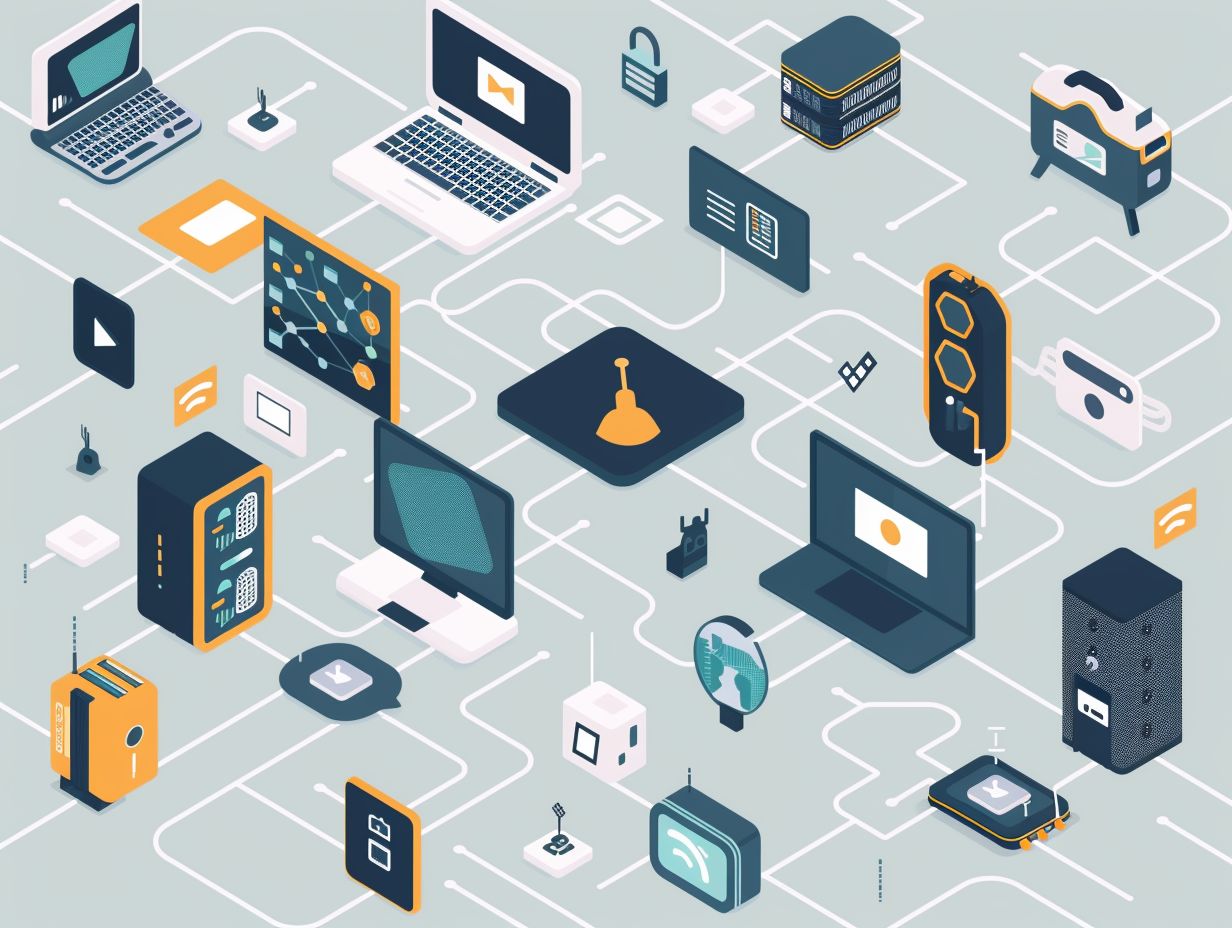In the ever-evolving world of Internet of Things (IoT), you will find that the integration of Linux has become increasingly prevalent. This discussion will delve into the benefits of utilizing Linux in IoT, highlighting factors such as cost-effectiveness, flexibility, scalability, and customization options. It is crucial to take into account challenges like security concerns and compatibility issues when considering the use of Linux in IoT.
Nevertheless, there are ample opportunities for Linux in the realm of IoT, given the expanding market for IoT devices and the potential for collaboration with open-source communities. Make sure to keep an eye out for best practices when implementing Linux in IoT, which will include considerations for hardware, software, security, and reliability.
Key Takeaways:

Overview of Linux and IoT Integration
The integration of Linux and IoT involves combining Linux, a versatile operating system known for its scalability and flexibility, with IoT devices, which encompass a wide range of connected hardware such as sensors.
This integration of Linux into IoT systems plays a crucial role in ensuring seamless communication and operation of connected devices. Embedded systems, which are specialized hardware components designed to perform specific functions within IoT devices, rely on Linux for their software framework. Through Linux, these embedded systems can efficiently manage data from sensors and other input sources, enabling the IoT network to gather valuable information.
Linux provides a stable platform for implementing communication functionalities, facilitating the exchange of data between IoT devices and external servers or cloud services.
Benefits of Using Linux in IoT
Utilizing Linux in IoT offers you numerous benefits due to its robust operating system capabilities, extensive support for applications, and compatibility with a wide range of hardware and software platforms.
Cost-Effectiveness and Flexibility
One of the primary advantages of incorporating Linux into IoT is its cost-effectiveness and flexibility, offering you, as a developer, a sturdy development environment and access to an extensive support network.
This open-source operating system enables you to efficiently customize and optimize your IoT solutions, while also providing a diverse array of development tools and libraries to streamline the development workflow. The inclusion of support for various architectures and hardware platforms within the Linux ecosystem enhances compatibility and scalability for IoT initiatives.
By utilizing Linux, you can leverage a robust community of contributors and resources, which will expedite innovation and establish long-term sustainability for your IoT applications.
Scalability and Customization Options
Utilizing Linux in IoT systems provides opportunities for scalability and customization, allowing for the development of tailored architectures, real-time capabilities, and seamless updates to address evolving requirements.
When selecting Linux for IoT deployments, you gain the flexibility to craft scalable solutions that can adjust to changing demands while maintaining optimal performance. A key benefit of leveraging Linux is its support for a range of architecture options, including edge computing, fog computing, and cloud integration. These architectures are instrumental in efficiently distributing processing power and enabling real-time functionalities for IoT devices.
Linux’s robust update mechanisms facilitate straightforward maintenance and enhancement of IoT systems, ensuring they remain current with the latest features and security patches.
Challenges of Using Linux in IoT

When integrating Linux into your IoT systems, you may encounter challenges such as security vulnerabilities, compatibility issues with a variety of hardware, resource constraints, and the requirement for power-efficient solutions.
Security Concerns
When integrating Linux into IoT, you face a critical challenge concerning security. The wide range of distributions, communication protocols, and developer practices can introduce vulnerabilities that must be addressed with strict compliance and robust security measures.
In Linux IoT deployments, distributions can vary significantly, each with its potential security flaws that malicious actors could exploit. It is essential for developers to remain current with the latest security patches and adhere to industry best practices to mitigate risks effectively.
The utilization of secure communication protocols, such as TLS and HTTPS, plays a crucial role in protecting the data transmitted between IoT devices and servers. Moreover, compliance with regulations like GDPR and adherence to industry standards further emphasize the importance of a strong security posture in Linux-based IoT systems.
Compatibility Issues
Ensuring compatibility between Linux-based IoT systems and various devices, features, and protocols poses significant challenges for you as a manufacturer or developer. It requires thorough testing and validation to fully leverage the benefits of integrating Linux.
Throughout the integration process, your focus should be on aligning Linux features with the specific requirements of the IoT ecosystem. Any incompatibilities can result in system failures and vulnerabilities, emphasizing the importance of comprehensive compatibility testing. Collaborating with device manufacturers is crucial for ensuring smooth connectivity and functionality. By establishing a standardized approach to compatibility testing, you can streamline the integration process and enhance the performance and security of Linux-based IoT systems.
Opportunities for Linux in IoT
In the IoT landscape, Linux offers significant opportunities for you to explore. With its robust connectivity features, adaptable architecture, vibrant community support, and collaborative environments, Linux provides a strong foundation for developers like you to innovate and create a wide range of IoT solutions.
Expanding Market for IoT Devices
The expanding market for IoT devices provides a fertile ground for integrating Linux, offering the opportunity to develop innovative software solutions, improved connectivity features, and a variety of applications to meet the ever-changing needs of consumers.
The rapid expansion of IoT emphasizes the crucial role of Linux in shaping the future of connected devices. By utilizing Linux in software development, you can access a robust ecosystem of tools and libraries that simplify the creation of cutting-edge applications. Linux’s compatibility with a wide array of devices ensures smooth connectivity, enabling IoT devices to communicate effectively and securely. This adaptability and dependability establish Linux as a fundamental element in propelling the growth and acceptance of IoT technology across diverse industries.
Collaboration with Open-Source Communities

Collaborating with open-source communities enhances Linux’s value proposition in IoT, fostering a culture of shared innovation, community-driven support, and rapid software development cycles that benefit both developers and end-users in the IoT ecosystem.
This collaborative approach not only accelerates the pace of innovation in IoT solutions but also ensures greater transparency and security through peer-reviewed code contributions. By tapping into the collective expertise of diverse community members, developers can troubleshoot issues more efficiently, leading to quicker problem resolution and overall product improvement. Engaging with open-source communities provides access to a wide array of shared software resources, libraries, and tools, enabling developers to leverage existing solutions and build upon them to create robust IoT applications.
Best Practices for Implementing Linux in IoT
When implementing Linux in IoT systems, it is crucial to adhere to best practices that cover considerations for hardware compatibility, software development methodologies, security protocols, and reliability standards to guarantee optimal performance and establish trust with users.
Considerations for Hardware and Software
When you implement Linux in IoT solutions, it is vital to carefully consider hardware compatibility, software platform selection, IoT device integration, and firmware management. These considerations are crucial for ensuring seamless operation and optimal performance in your IoT environment.
The interplay between hardware and software is a key factor in successfully integrating Linux into IoT ecosystems. Your choice of platform, whether it is a single-board computer or a microcontroller, will impact the overall functionality and scalability of your IoT system. Regular firmware updates are necessary to address security vulnerabilities and introduce new features. Employing device integration techniques, such as utilizing standardized protocols like MQTT or CoAP, will facilitate communication between IoT devices and Linux-based systems, promoting smooth coordination and data exchange.
Ensuring Security and Reliability
Maintaining security and reliability in Linux-based IoT deployments requires you to prioritize continuous updates, compliance adherence, robust security protocols, and regulatory alignment. These measures are essential to safeguard sensitive data, ensure system integrity, and meet industry standards.
Regular software updates are crucial in Linux-driven IoT systems to address emerging vulnerabilities and enhance resilience against potential cyber threats. Compliance with regulations such as GDPR, HIPAA, or PCI DSS is critical to protect user privacy and uphold data integrity. Implementing encryption techniques, access controls, and secure communication channels are foundational security practices that strengthen the IoT environment.
Adhering to regulatory frameworks like ISO/IEC 27001 offers a structured approach to managing information security risks, ultimately improving system reliability and trustworthiness.
Frequently Asked Questions
What is the role of Linux in IoT?

Linux plays a crucial role in IoT as it is the most widely used operating system for connected devices. It provides a stable and secure platform for IoT devices to function on.
What are the opportunities for Linux in IoT?
Linux offers a wide range of opportunities for IoT, such as its compatibility with different hardware and architectures, its open-source nature, and its flexibility for customization.
What are the challenges of using Linux in IoT?
Some of the challenges of using Linux in IoT include security vulnerabilities, limited resources for smaller devices, and the need for specialized knowledge and skills.
How does Linux contribute to the growth of IoT?
Linux has been a driving force in the growth of IoT by providing a stable and reliable platform for connected devices, enabling interoperability between different devices and systems, and promoting innovation through its open-source nature.
Why is Linux considered the preferred choice for IoT development?
Linux is the preferred choice for IoT development due to its low cost, high compatibility, and widespread community support. It also offers a wide range of tools and frameworks specifically tailored for IoT development.
Can Linux be used for both edge and cloud computing in IoT?
Yes, Linux is suitable for both edge and cloud computing in IoT. It can run on a variety of edge devices and also provides support for cloud-based services, making it a versatile option for IoT development.
